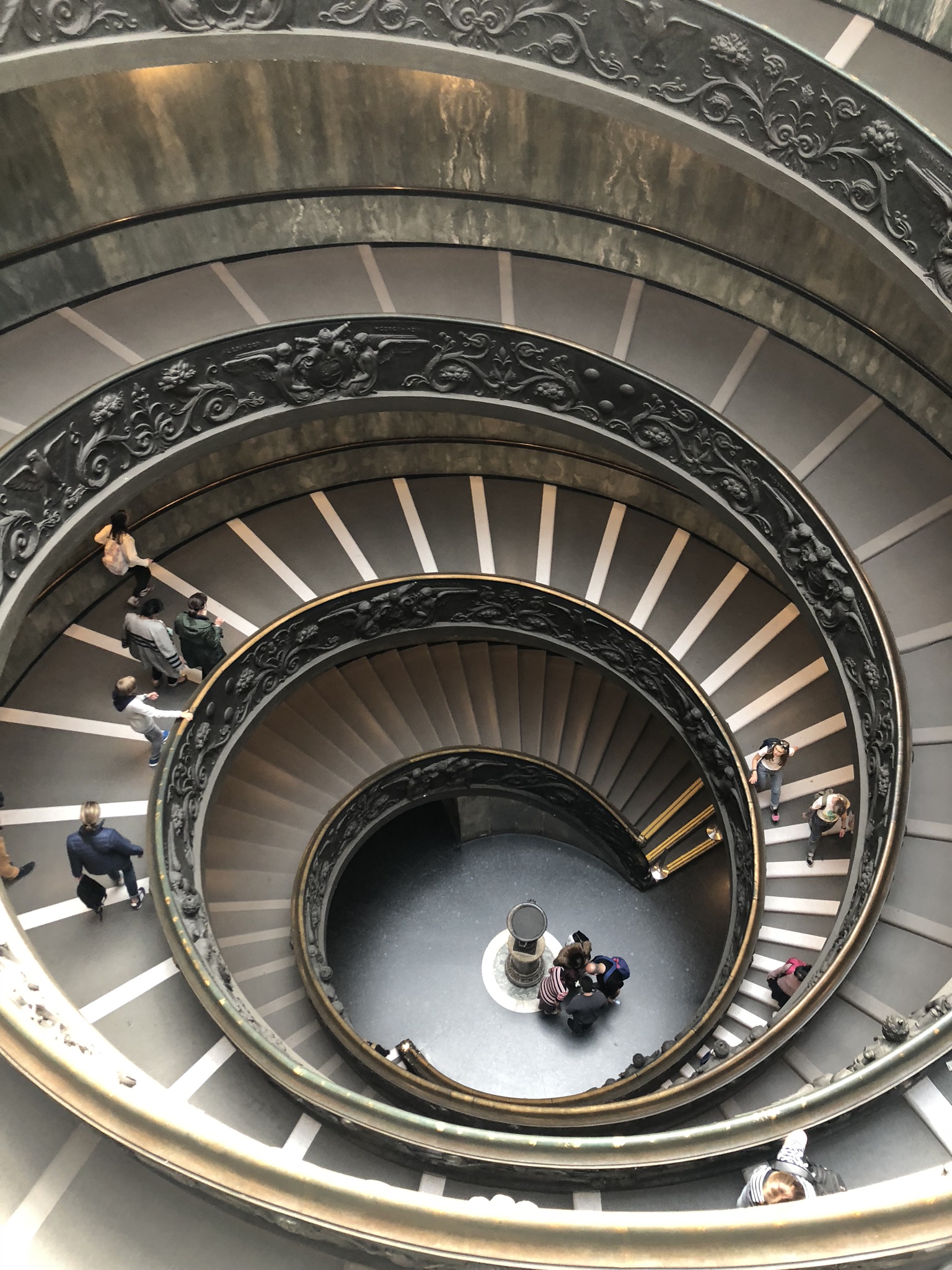Location: Vatican City Weather: 18C, sunny (guess who got a sunburn?!)
“And I also say to you that you are Peter, and on this rock I will build my church”
– Matthew 16:18
Vatican City: the world’s smallest state, nestled in the center of Rome. It is the seat of the Catholic religion, the beating heart of 1.2 billion faithful around the world. The city itself is home to a few hundred, mainly priests, nuns and the Swiss guards. As my Vatican guide stated, it’s also the birth place of 4 babies every year – those of the Swiss Guards of course!
Whether or not you are catholic or even religious, the Vatican and it’s main focus of St Peter’s Basilica is most assuredly worth a visit.
At the centre stands St Peter’s Basilica. Interest fact: St Peter’s is not the Cathedral Church of Rome (because it isn’t in Rome, nor is it considered the Pope’s Church or the Mother Church of the Catholic faith. That would be St John Lateran Church. However, it does hold the distinction of being the largest church in the world and highly likely, the most well known.

Leading up to the majestic Basilica is none other than St Peter’s Square. Designed by the sculptor Bernini in the late 1600’s, it is impressive to say the least. The other perimeter is delineated by Doric columns, 4 deep, seemingly guiding one towards the entrance of the church. Or as the master Bernini himself described : encloses the visitor with the maternal arms of Mother Church. How poetic (Bernini was a poet as well).
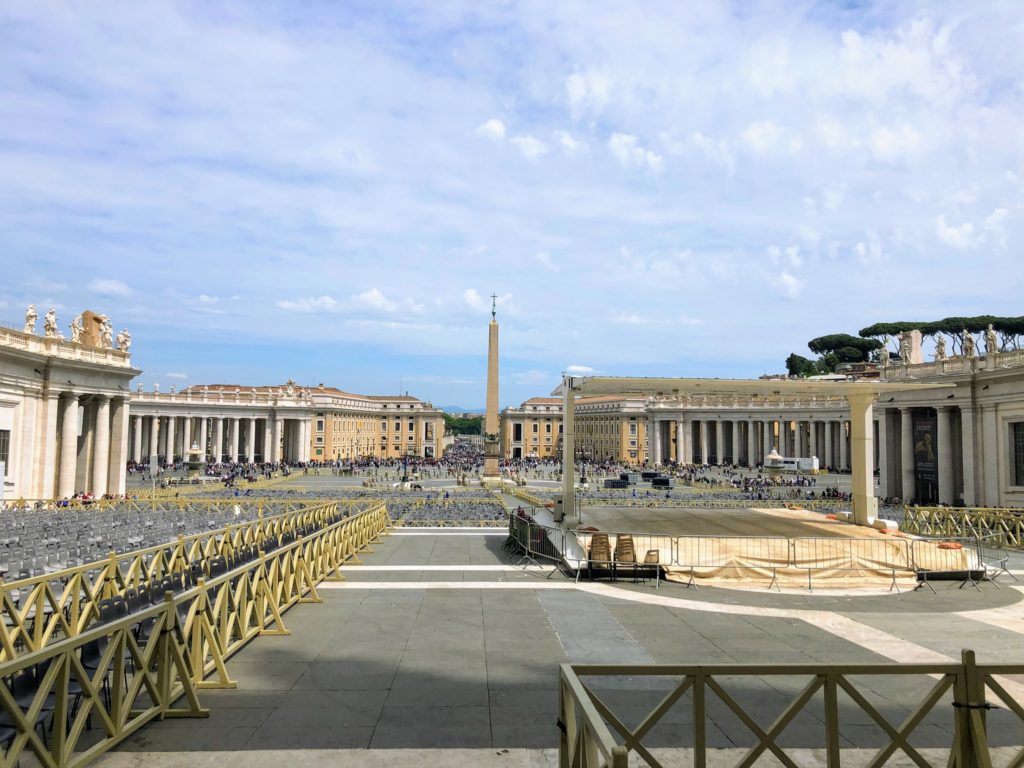 St Peter’s square, opposite view from the church
St Peter’s square, opposite view from the church
The giant Egyptian obelisk in the centre might seem out of place in such a holy location. Well, in truth, it is. Originally brought to Rome by the Emperor Caligula, it was moved to the square at the end of the 16th century by order of the Pope. It was considered fashionable to appropriate ancient pagan symbols and in order to ‘catholisize’ it, a bronze cross was placed on top.
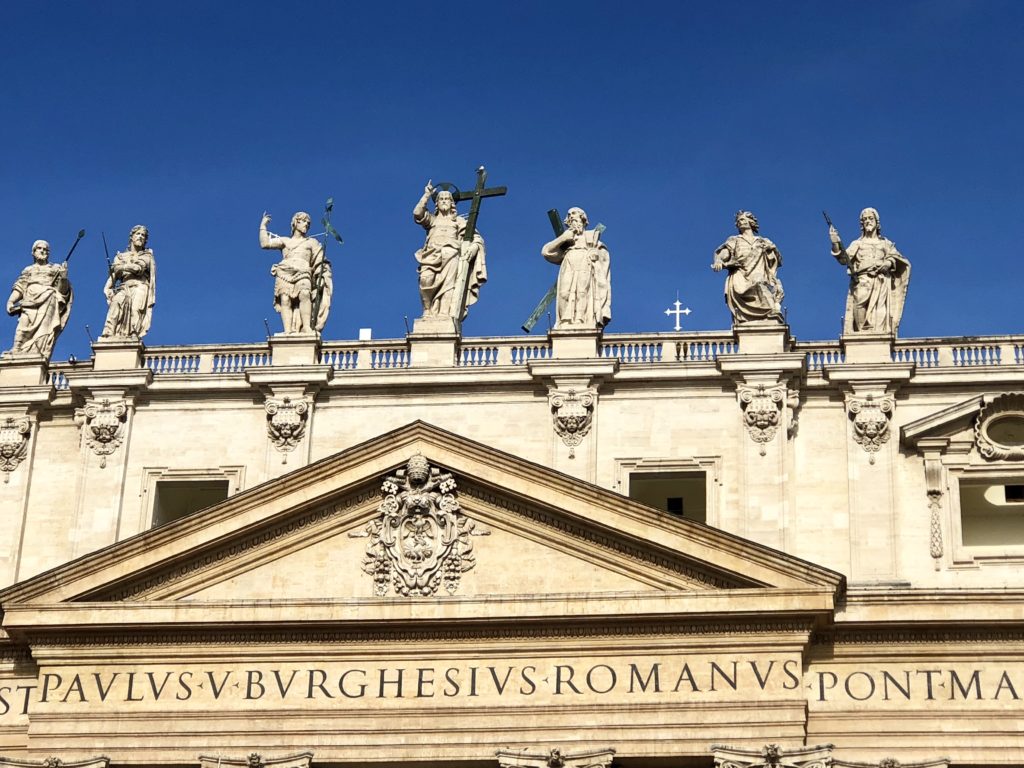
Above the 284 columns stand 140 sculpted statues of saints, all by Bernini’s hand.

Bonus points for anyone who recognizes this now famous sculpted plaque in the pavement of the square…
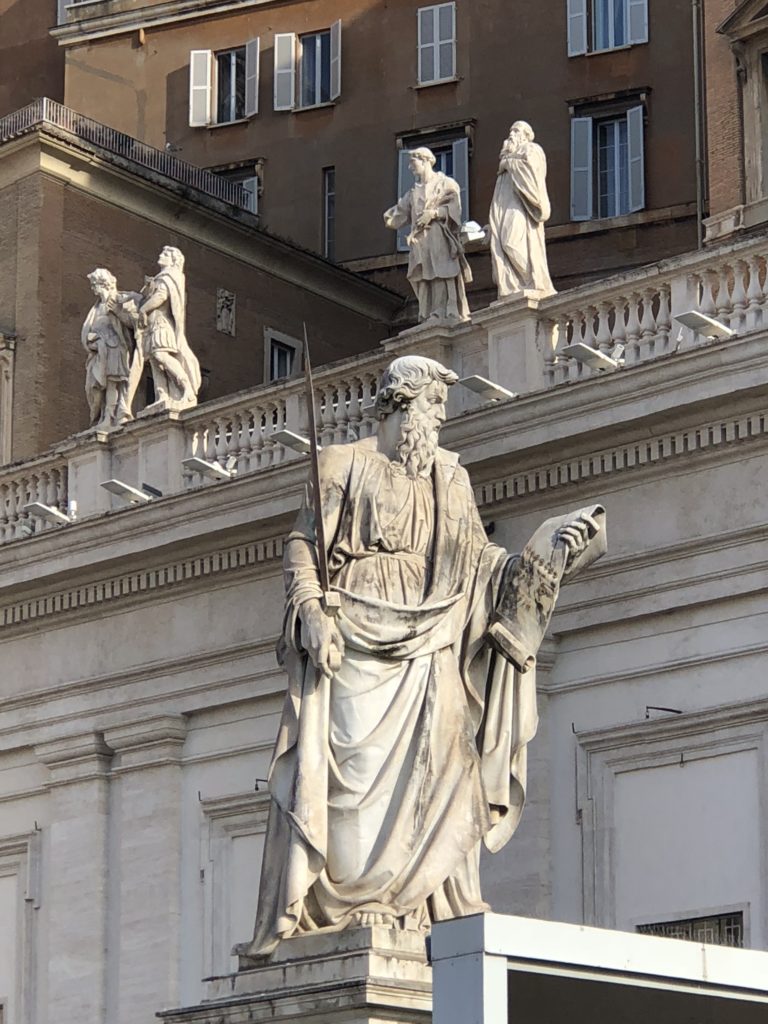
Apart from the square and the cathedral, the Vatican also has an expansive museum, the 5th largest art museum in the world! Filled with priceless treasures dating back to antiquities, it would take one 12 years to view every one of its 70 000 works.
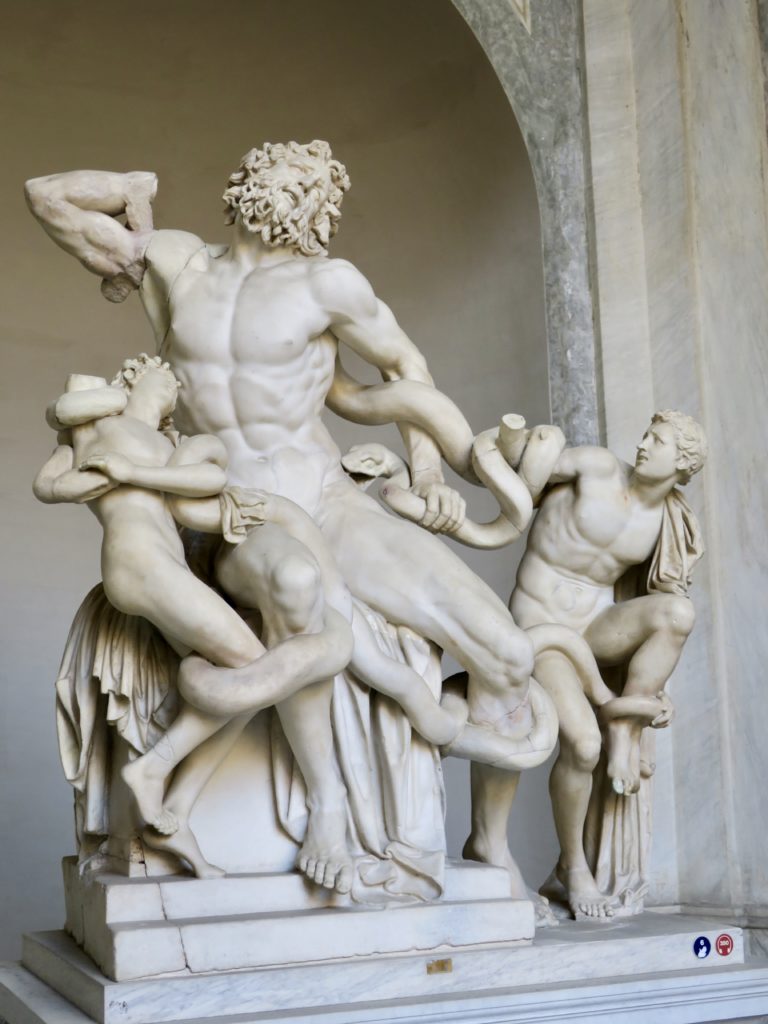
The statue of Laocoön and His Sons has been one of the most famous ancient sculptures ever since it was excavated in Rome in 1506 and placed on public display in the Vatican, where it remains today. Various dates have been suggested for the statue, ranging from about 200 BC to the 70s AD. It is said that Michelangelo was so moved by seeing this sculpture as for him it represented the epitome of male beauty and used it as inspiration for David.
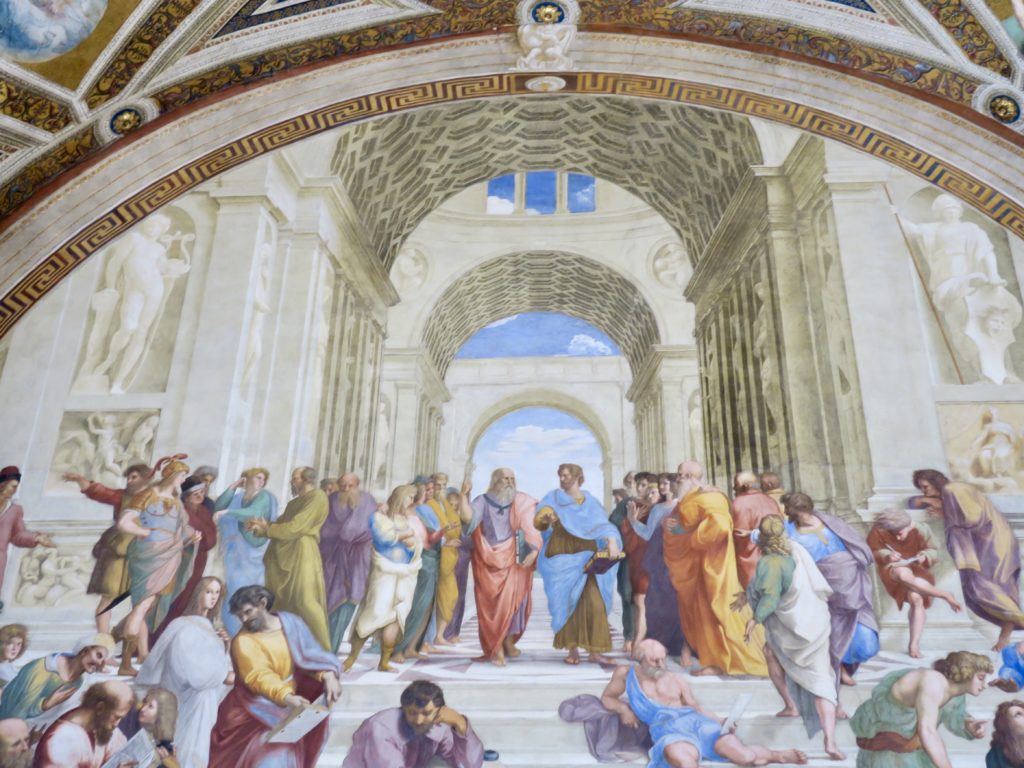
One of the most famous paintings, is Raphaël ‘s School of Athens. A fresco painted in one of four rooms created by the artist, it depicts the degrees of knowledge or the truth acquired through reason. Raphael and Michelangelo both worked on projects in the Vatican at the same time (the papal apartments and the Sistine Chapel, respectively) and we’re bitter rivals. However, it’s said that Raphaël had a chance to view Michelangelo ‘s work and would begrudgingly admit that although he hated his character, the guy was a genius.

The Vatican even has a wonderful collection of modern art, such as this Chagall piece entitled Red Pieta, which resided in Pope Francis’ personal apartment up until last year.
It’s not just the walls that have impressive art, the floors and ceilings are a marvel as well.

This tiled marble flooring was taken from Hadrian’s palace and is over 2000 years old. And I walked all over it.

The museum itself is in large part housed in former papal apartments, such as those of the Borgia pope who decorated his bed chamber with fertility symbols, such as the hanging acorns in the gilded ceiling seen here.
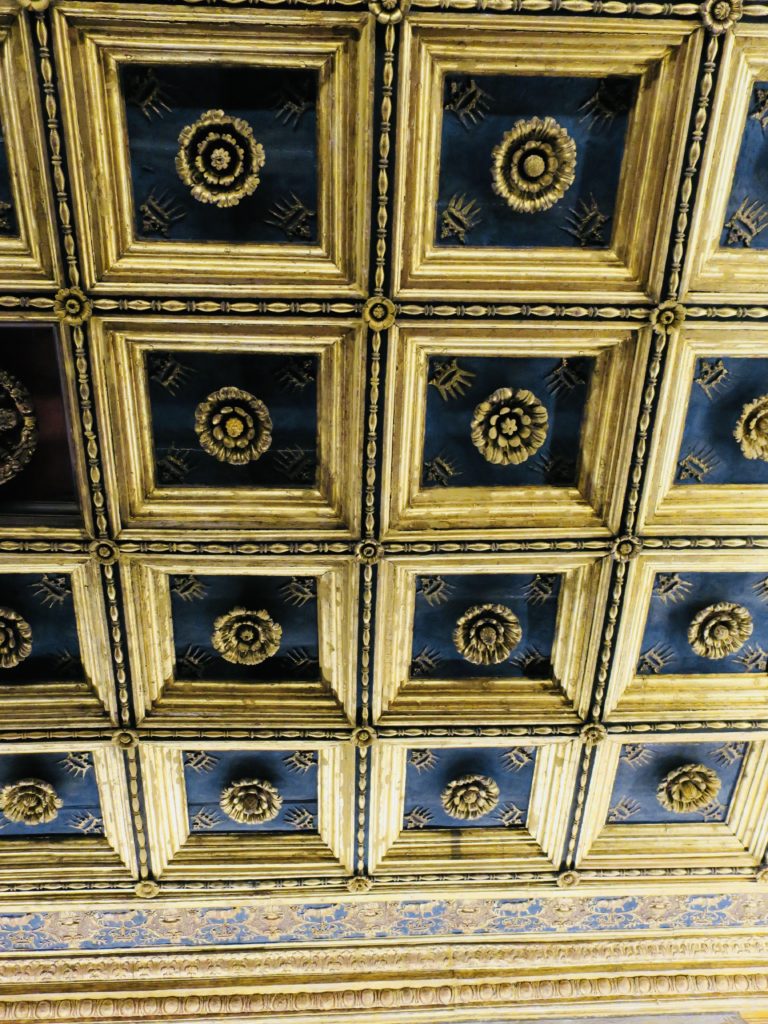
Least we forget, the piece de resistance : St Peter’s Basilica.

The Basilica was constructed in the burial site of St Peter, considered to be the first pope, the first Bishop of Rome. St Peter was crucified upside down, deeming himself unworthy to die in the same manner as Jesus. Numerous scientific and archeological studies have been done on the site, and the set of remains found on the location said to be the burial site are a 90% likely hood to be those of Peter himself.

A bronzed statue of St Peter, it’s feet polished to a shine from being touched by millions who visit.
The interior of the church had many architects, a Pope favo rite,Raphaël, included. After the death of all these men (Raphaël died in his late thirties), the new pope asked an aging Michelangelo to oversee the final design and construction; he is credited with the design of the church as it stands today.
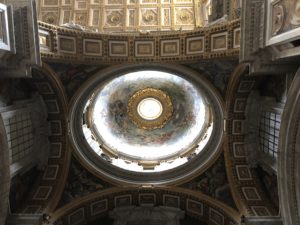
Another famous artist years later, Bernini, contributed to the decoration of the holy church. His most noticeable work would be the enormous bronzed ‘Baldacchino’ (canopy).
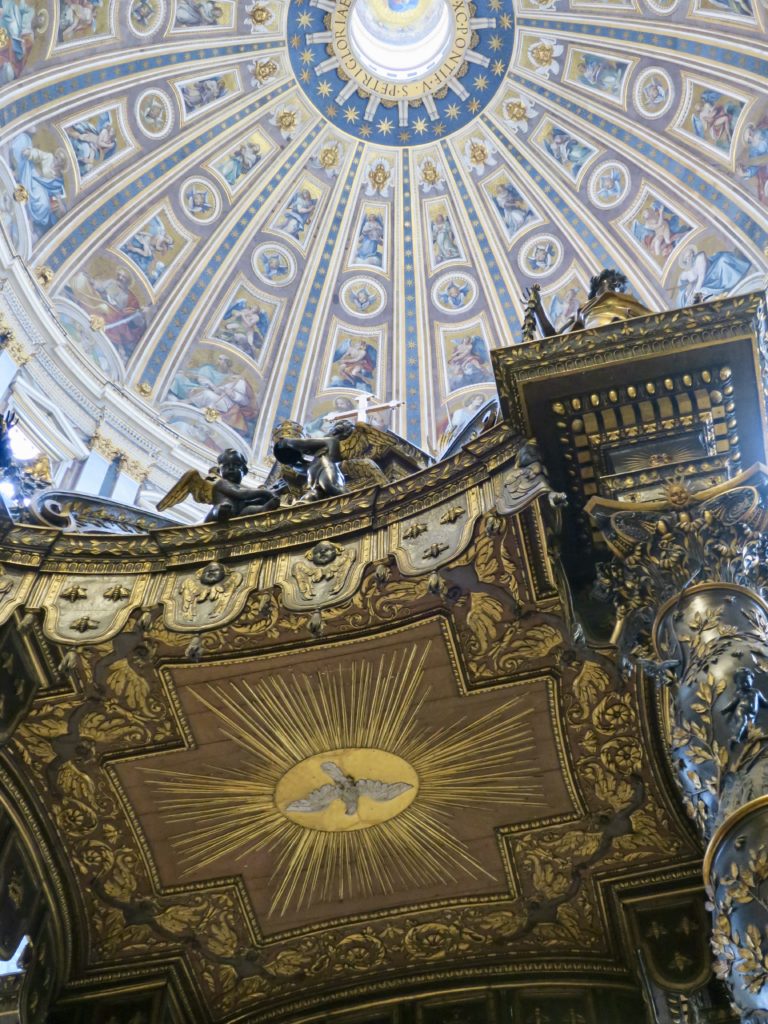
The rest of the interior is hard to describe; simply, it’s spectacular.
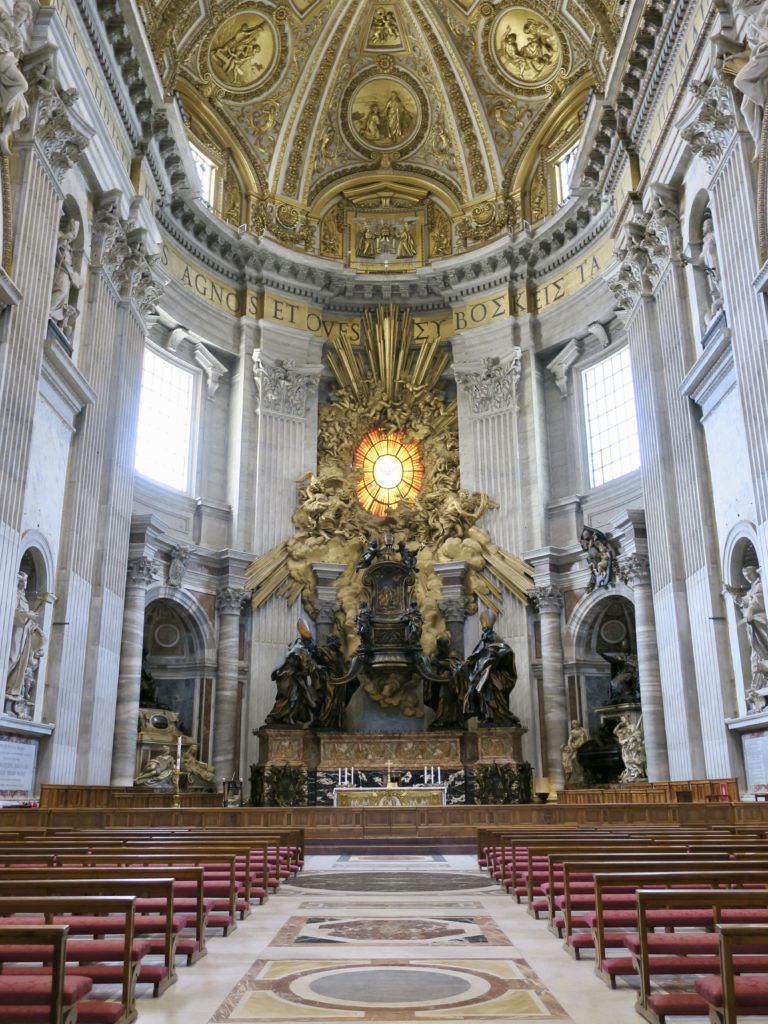
And of course, Vatican City is the home of the current Pope, Francis. Every Wednesday, he holds a public audience in St Peter’s Square, concurrently done in several different languages (I counted at least 5), giving the faithful and the curious an opportunity to see the Pope up close.
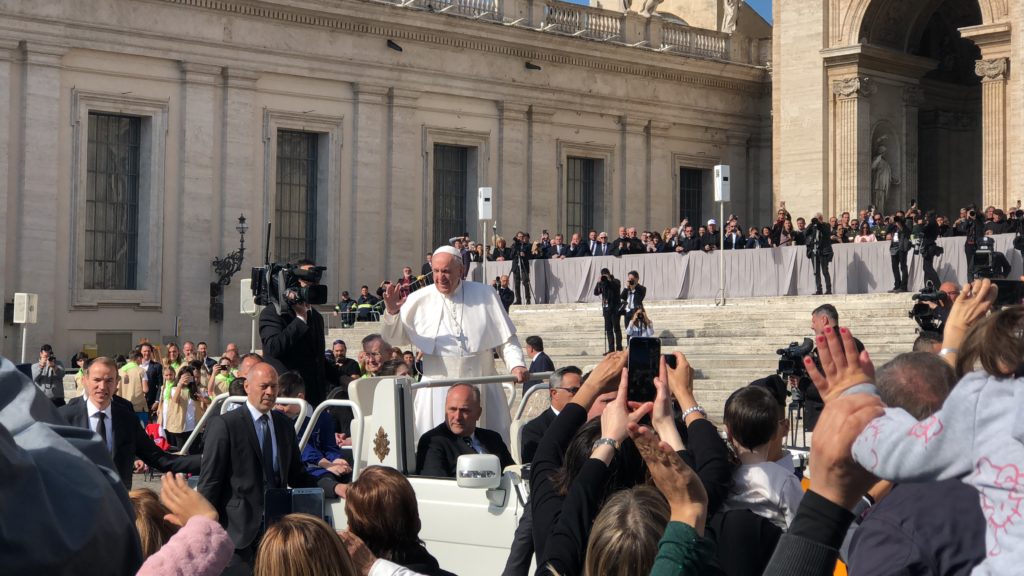
The Pope rides by the cheering crowd several times in his trusted ‘pope mobile’ before conducting a few prayers and a blessing. As soon as he appears, the crowd erupts loudly with shouts of ‘Papa Francisco’.
It was quite moving.
